An original, exclusive decoration of the interior of the living room or bedroom will be a lamp made of isolon, made by hand. The material with phenomenal plasticity and other unique physical and mechanical properties allows you to give the model on the lampshade any shape.
What is isolon
The lighting fixture will fill any living space with a cozy atmosphere and romantic content. Izolon is a high-tech foamed type of polyethylene.
The material, which is perfectly suited not only for finishing building structures, but also for making decorative elements, is produced in:
- rolls;
- thin sheet panels;
- blocks;
- long narrow strips.
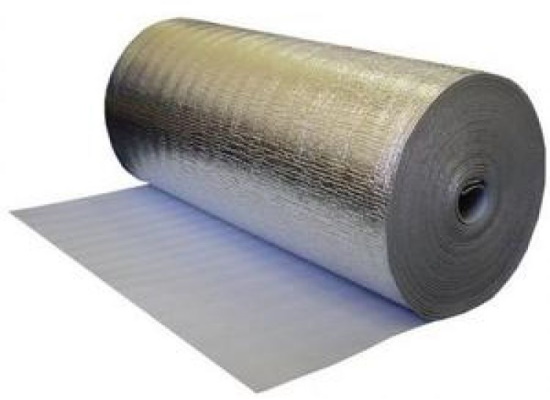
In the construction industry, isolon is used as an effective heat-insulating material with water-repellent and noise-absorbing characteristics. Foamed polyethylene is widely used in the manufacture of home decor items and interior composition parts.
An isolon lamp with an original lampshade is a unique opportunity to add a touch of exclusivity to your home and demonstrate your own creative abilities. The material is easily processed mechanically and thermally.
Uncrosslinked foamed polyethylene is available for sale. This is the name given to a material that has not undergone special treatment. It is characterized by relatively low strength and an affordable price. A more expensive modification of isolon is called crosslinked. This material has undergone special heat treatment, so it has improved characteristics.
Advantages of Izolon
Foamed polyethylene is environmentally friendly and fireproof. When burning, it does not emit poisonous substances or toxic compounds. This lamp is recommended by pediatricians for use in children's rooms. An important advantage of the material is its low thermal conductivity.
The operational and consumer advantages of foamed polyethylene include:
- increased strength after special heat treatment at the factory during manufacturing;
- the ability to withstand significant mechanical loads of tension, fracture and rupture;
- long service life – the service life of isolon is estimated at 80-90 years;
- resistance to fatty, water and chemically aggressive vapors, allowing the use of such lighting fixtures in kitchens;
- water-repellent properties – the material’s water absorption coefficient is less than 1%, which makes it suitable for integration into the structure of decorative bathroom lighting;
- the low weight of the product, which makes it possible to mount the product on any fragile surfaces, including plasterboard and PVC film;
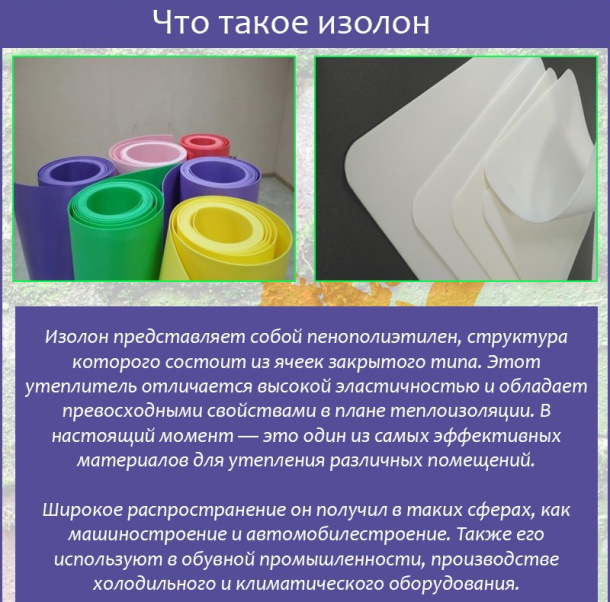
When burned, isolon decomposes into components that are safe for health and the environment – carbon dioxide and water. The material is chemically inert and does not react with solvents, household detergents, alkalis and other aggressive substances.
It is not suitable for the growth of mold and fungal cultures or any bacteria. Therefore, isolon fully complies with sanitary and hygienic requirements for household products. The body of such a lamp does not fog up and can withstand significant impact and vibration loads.
Operational features
The material, which has a soft cellular internal structure, is easy to cut with sewing scissors or a sharp knife. It does not ignite in the conventional sense when exposed to open fire.
The combustion process of isolon consists of its bending, deformation and formation of a sticky mass. Parts of the product made of foamed polyethylene are easy to connect by gluing, stitching, or using metal or plastic fasteners.
The material has an internal structure that does not change over time, which ensures a long service life of the lamp and geometric stability of its body. An important operational feature of foamed polyethylene is the absence of signs of decay even with many years of use in summer cottages.
Such a lamp does not serve as a breeding ground for rodents and parasitic insects. Some types of foamed polyethylene quickly return to their original shape after forced deformation.
An isolon lamp on a lampshade is made from sheet, roll or block material of any modification. The thickness of industrially produced polyethylene foam varies in the range of 2-10 mm. The standard sheet width is 80-150 cm, the length is 50-200 cm.
Manufacturers mark Izolon with the abbreviation PPE and the following 4 digits. The first 2 indicate the foaming ratio, the last 2 indicate the sheet thickness. The overall parameters of different types of polyethylene foam are presented in the table.
| Brand | Thickness, mm | Roll length, cm | Sheet width, cm |
| 3003 | 3 | 1700 | 150 |
| 3005 | 5 | 1000 | 150 |
| 3008 | 8 | 600 | 150 |
| 3010 | 10 | 500 | 150 |
The density of all variants is 3.3 kg/cm3. The elasticity and pliability of the material make it much easier to work with. It does not require much effort to make an electrical appliance of any shape.
Types of polyethylene foam lamps
The phenomenal plasticity of the material allows for the production of products of the most varied stylizations. The operating temperature range of isolon is -80… +60°С. The material is resistant to ultraviolet radiation, so the lamp can be used in open spaces in the summer.
The foamed polyethylene grades isolon 500 and PPE 3002 are ideal for making a full-length floor lamp. They are sold in stores with a special indication on the packaging that they are intended for decorative purposes and handicrafts.


Types of isolon lamps are distinguished by:
- type of stylization;
- size;
- coloring;
- method of installation or assembly.
Light coloring provides good light transmission of the lampshade. The device intended for night lighting can be painted in a dark shade. The choice of color scheme is limited only by your own imagination and taste preferences. The size of the decorative and functional lighting device can be different.

Izolon is used to make:
- wall sconces;
- bedside table lamps in the bedroom;
- devices for lighting a country house;
- children's night lights;
- decorative lighting fixtures for garden and park design.
The type of device must be taken into account at the stage of designing the work and preparing materials. The required amount of polyethylene foam depends on the size and style of the lamp, and the installation method determines the additional consumables and tools.
How to choose a lampshade configuration
The device body can be given any style. Floral motifs look romantic.

Decorative lighting fixtures made of foamed polyethylene are stylized as:
- chrysanthemum;
- field poppy;
- garden violet;
- meadow chamomile;
- mountain lavender;
- a voluminous rose with loose petals and any other flowers.
The lampshade of the product can be given the appearance of a rununculus, better known as a "buttercup". The choice of the shape of the lamp body is purely a matter of taste. However, it is recommended to make it harmoniously combined with the interior ensemble, so that compositional and aesthetic dissonance does not arise.
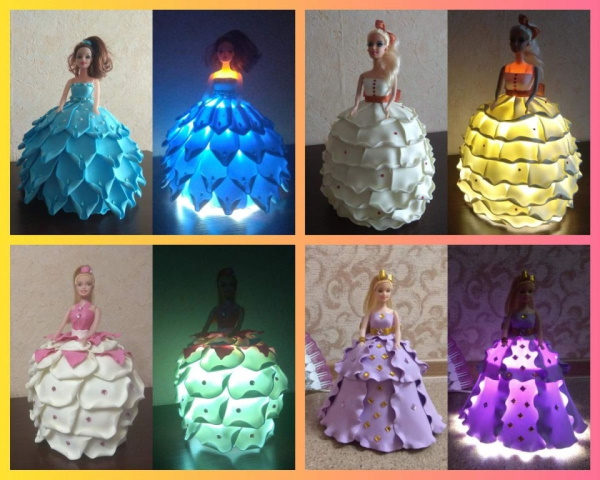
For a child's room, the product is stylized as a doll, a fairy tale hero or a recognizable cartoon character. Among interesting design ideas, figures of forest animals, exotic animals and mythical creatures attract attention. The lampshade is given the appearance of a football, an owl and other objects.
Materials and tools
The lamp is made from isolon of any type, size and design. The material has a transverse structure, which improves its operational properties. The technical characteristics of the grades of polyethylene foam suitable for the product on the stylized lampshade vary depending on the number of foaming cycles.
This is not of particular importance for the production of a decorative electrical appliance. The extruded variety of polyethylene foam has the lowest thermal conductivity coefficient. For the hand-made production of a lampshade, a sheet 2 mm thick and 20x20 cm in size is preferable.

Required consumables:
- a polymer pipe with a diameter of 16 mm, which will become the supporting frame of the product;
- electric cartridge with ring;
- LED lamp of the appropriate diameter;
- coupling selected according to the size of the base;
- electrical cable 2-3 m long;
- compact switch of any design;
- an electrical plug for connecting the finished device to the power grid.
For a small table or wall lamp, you can use a hollow metal-plastic pipe 1.2-1.5 m long. If you plan to make a massive floor-mounted fixture, you should choose a longer supporting structure inside which the wire will pass.

To work you will need a minimum of tools:
- flat or Phillips screwdriver;
- special glue gun;
- large sewing scissors or a shoe knife for cutting isolon;
- construction hair dryer;
- a stationery knife that is convenient for removing insulation from electrical wires.
Thin sheets of polyethylene foam are easier to shape than thick blocks. However, care must be taken when working with them. Such sheets can easily be overheated, causing them to melt and turn into an unworkable viscous mass.
Making a lamp
To make a decorative electrical appliance with your own hands, you need to assemble its parts separately and then combine them into a single structure. The task is not particularly difficult if you follow the step-by-step instructions below.
Assembling the lampshade
This element determines the appearance and aesthetic value of the product. It is recommended to make a template of the selected shape on a sheet of thick cardboard in advance. It will serve as a template when cutting the isolon.
Step-by-step process of making a lampshade:
- Remove the sealing ring from the electrical socket.
- Glue it to the coupling sleeve.
- Give the polyethylene foam sheet the desired shape using sewing scissors or a sharp knife.
- Heat the isolon blank with a hair dryer, deforming it with your fingers.
- Glue the pieces of material together using a special gun.
- Attach the coupling with the ring to the lower surface of the lampshade.
To give the product the shape of a rose from isolon, petals are cut out using a pre-prepared template. You will need a couple of sheets of foamed polyethylene with an area of 20 cm2, 2 mm thick and several blanks measuring 15x15 cm. Their exact quantity depends on the preferred number of petals.
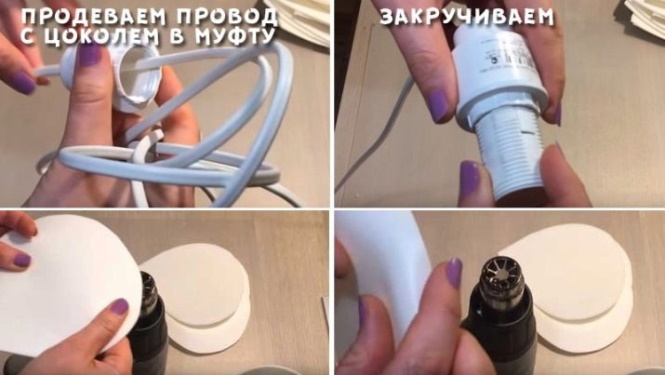
Master class on making a lampshade in the shape of a rose:
- Cut off blanks with an area of 20 cm2 adjacent corners. As a result, when connected, you will get something like petals.
- Give the 15x15 cm pieces a teardrop shape.
- Cut out streamlined, elongated pieces with teeth, reminiscent of a sepal, from a 20x5 cm sheet.
- Heat the edges of each piece with a hair dryer, bending them towards the center with your fingers.
- Glue 2 large petals cut from a 20 cm sheet onto the muff.2 with a slight outward tilt.
- Fasten the petals obtained from the 15x15 cm blanks on top, overlapping each subsequent row by half with the previous one.
The last thing you need to do is apply the shaped parts from a 20 cm blank.2. The teardrop-shaped groove, which will give the lampshade the appearance of a rosebud, is formed by pressing on the center of sheets of material heated with a hair dryer.
Stem assembly
An isolon lamp on a lampshade is a product that includes decorative and electrical parts. The first is limited to a stylized lampshade. The stem, although it has a figured curved shape, is considered an element of the electrical part of the device.
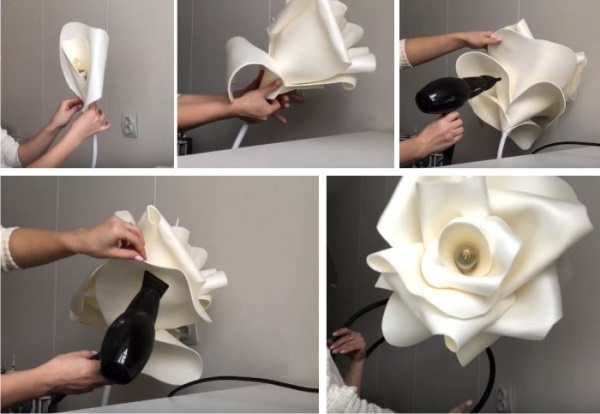
Manufacturing process:
- Heat the plastic pipe with a hair dryer.
- Twist the bottom part into a flat spiral to form the lamp stand, and bend the top and central parts in a decorative manner, imitating a stem.
- Strip the ends of the electrical wire with a utility knife. It is enough to remove the insulating material from 1-1.5 cm of the cord.
- Insert the ends of the bare wire into the holes in the socket.
- Clamp the stripped ends of the electrical wire with screws.
- Pass the cord through the sleeve and pull it inside the stem.
- Pull the electrical wire out from the opposite end of the pipe and strip the ends.
- Secure the exposed sections of the cord inside the plug with screws.
When assembling the stem, it is important to correctly determine the center of gravity. Otherwise, the lamp will be unstable.
Assembling the entire product
The final stage of the work is to connect the switch. The electric wire is cut and the ends are cleared of insulating material. The switch is unscrewed, the exposed part of the cord is fixed in the terminals, and the device is assembled.
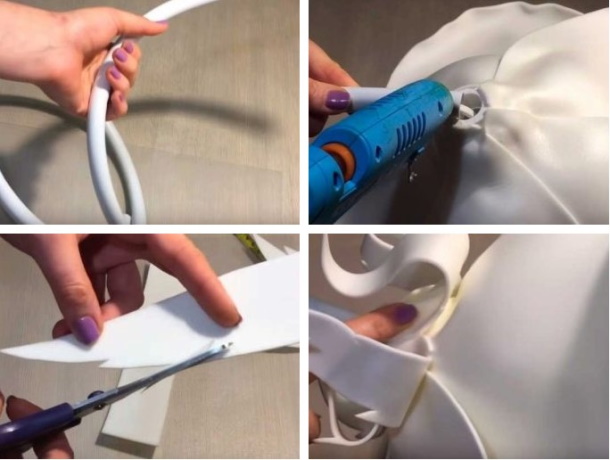
Final assembly of the lamp:
- Tighten the electrical wire.
- Attach the lampshade to the stem.
- Mask the attachment point and glue drips with isolon cut in the shape of sepals.
- Screw the LED lamp into the socket and perform a test check of the functionality of the decorative electrical appliance.
The size and type of the product depends on the length of the plastic pipe, the size and number of sheets of foamed polyethylene used. A large floor lamp and a miniature bedside lamp are made in a similar way. The only difference is in the size of the decorative device and the length of the wire.
Painting the finished product
The realistic and highly artistic appearance of the model is given by the emphasized attention to detail and naturalistic color range. Tinted sheets of polyethylene foam are available for sale. If standard solutions do not suit you, you can approach the issue creatively.
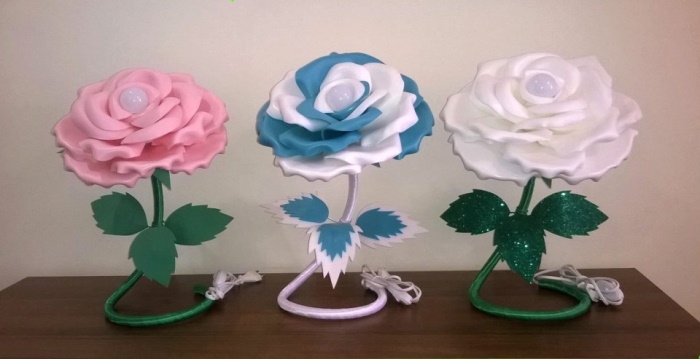
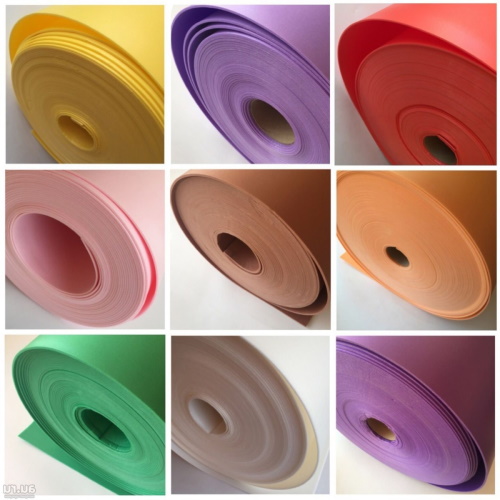
The isolon lamp on the lampshade is painted in various shades. The choice of color scheme depends on the styling of the product. Not all types of paints adhere well to foamed polyethylene.
If desired and with the appropriate artistic skills, you can create thin gradient transitions on the surface of isolon, imitate dew and other unusual aesthetic effects.
More traditional colors are scarlet, coral, snow-white. Dyes of almost any shade are available for sale. You can choose a composition of quite extravagant colors - lilac, mossy, copper.
Spray paint
Convenient and fast coloring option. Enamel adheres well to the surface of isolon and provides uniform tinting. Aerosol paint dries quickly, does not require additional devices for application and has a rich color range.
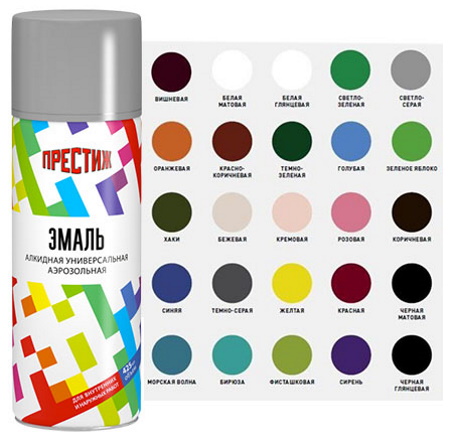
The only downside to this product is its high consumption. For painting a large-scale product, for reasons of economy, it is better to give preference to another option. The composition is a finely dispersed suspension.
It fills the cellular structure of foamed polyethylene well. Sprayed under high pressure, such paint creates a perfectly smooth film coating on the surface. Aerosol enamel does not require preliminary preparation for work.
It is pumped into the cylinder using chemically inert gaseous compounds that are non-toxic and non-flammable. This composition is absolutely safe to use. Aerosol enamel has extraordinary artistic properties.
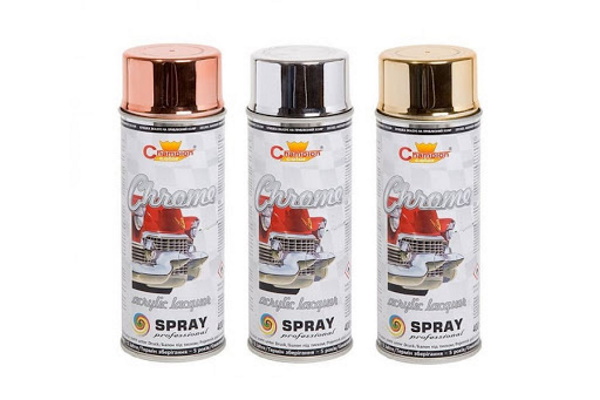
Using it, you can create the following on the surface of isolon:
- printed effect;
- metallic shine with a hint of futurism;
- the texture of various materials, including natural and exotic ones;
- blurred rainbow hues.
Aerosol paints are produced glossy, pearlescent, matte. There are compositions with fluorescent reflections and unusual imitation of diamond spraying. Such painting allows you to make the lamp a real work of art.
Acrylic enamel
It is considered reliable, durable and resistant to external influences. Acrylic enamel is applied to the surface of isolon in an even layer, forming a highly durable protective film. A product painted in this way retains an aesthetically attractive appearance for many years.
To apply acrylic enamel you will need a spray gun. It is not recommended to tint isolon with a polymer composition using a roller or brush.

Acrylic enamel is distinguished by:
- increased elasticity, which makes it compatible with foamed polyethylene, which has similar properties;
- scratch and abrasion resistance;
- water-repellent properties;
- wide range of operating temperatures.
Modern coloring compositions of this type come in delicate pastel shades, which makes them the best option for tinting floral-style products. Acrylic enamel contains an organic solvent and siccatives - auxiliary substances that accelerate the drying of the product.
Rubber paint
Similar to the previous version. The application technology is identical. The rubber paint is based on a water-acrylic solution, which includes additional components to increase the versatility of the product.
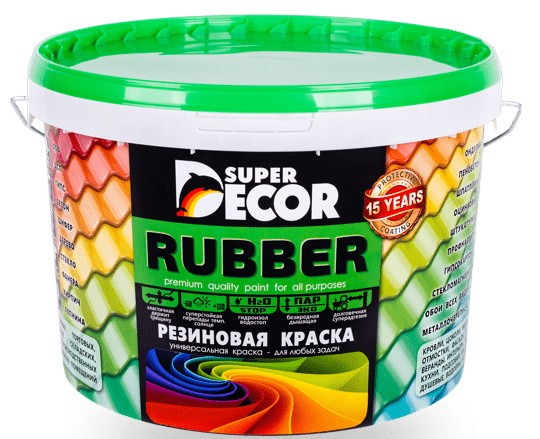
This coating has increased strength, does not crack over time, and does not let moisture through. Rubber paint has a matte texture. If you plan to give the lamp an attractive shine, you can cover the lampshade with a layer of glossy varnish on top.
This composition adheres well to any surface, including porous foamed polyethylene. Acrylic latex gives rubber paint special strength and high plasticity.
This coating is considered suitable for a lamp made of isolon. The elasticity of the paint composition and foamed polyethylene allows the product to be attached to a stylized lampshade on surfaces subject to periodic movement - house or room doors, garage doors, window transoms.
Video about the craft
Izolon lamp on a lampshade:
